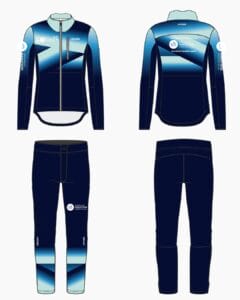- February 6-7-8, 2026

- About
- New to CSM
- Ski the CSM
- Results
- Photo Gallery
- Ski Challenge
- Contact
- FR

the ski marathon trail every winter, skiers can come to this website section to see the details of what will be skied that particular year. Typically near mid-January, the 10 sections that define the 160 km adventures are finalized and we are ready to publish details. Here you will find a section-by-section description of the trail in general terms. Estimated distance and elevation graphs will be presented. Always keep in mind that the Canadian Ski Marathon offers a special and unique trail that is only skied on the particular weekend of the event. It is a winter adventure! As such details are provided as a guideline. In preparing the trail we keep to the general philosophies that launched the event so many decades ago. The trail is approximately 80 km per day. It is mostly tracked set for classic skiing and where feasible we double-track-set the trail to make passing easier. Indeed on a good snow year, 80% of the trail may have two parallel sets of tracks.
9.5 km to 25 km. They start and end with a Check Point (called CPs) where hot and cold drinks, food, and waxing services are offered by our volunteers. First aid is also available and buses are available within a reasonable wait time to exit the course. If abandoning the marathon mid-way through a section, always remember to let an official know! Most sections have a “water station” somewhere about halfway that is tended by volunteers. Food is often not available at water points so skiers should be ready for these longer sections to provide their own snacks for the journey.
the trail traveled westward, typically from Lachute to Gatineau or Ottawa. In 1994 the CSM organization decided to offer some variety to the skiers and began to alternate the direction – every even year would see the course shift eastward and by then start in Buckingham and end in Lachute. Montebello has always been maintained as the mid-point where the event ends on Saturday night and begins on Sunday morning.
In 2018 a new section was launched. To mitigate risk against warming trends and urban development, a northern section was developed, starting just south of Mont-Tremblant and finishing in Montebello. It was a big success. Having three legs to choose between allowed the event to choose two of them each year depending on many factors. In 2018, 2019 and 2020, the event used the northern and eastern sections, finishing in Lachute. In 2021 and 2022, the event was held in a virtual format due to the Covid pandemic. In 2023, it used the northern and western section, finishing in Buckingham.
The pandemic led to a reduction in the number of skiers. The three linear “point-to-point” sections are very expensive to prepare in the fall and groom in winter and they require extensive busing of skiers, so a new route was developed. It is centred in the spectacular Kenauk Nature reserve where there is an extensive network of summer roads and trails to choose from and the finish line is in Montebello on both days. Every effort is made to make the two days as different as possible by using different trails or skiing in the reverse direction. There is an additional bonus. In 2024, on the day before the event, there was a big thaw and rain storm that made three of the ten sections of the trail unusable on both days. The Kenauk network provided last-minute opportunities to change to route and save the event. This would not have been possible on the traditional three legs. In 2025, the event was blessed with great snow and again used the Kenauk network.
CSM has a long history of adapting to changing conditions, whether it be snow conditions, ice storms, wind storms, trail closures, landowner issues, etc. We will do everything in our power to pivot and provide a fantastic and safe event.
Whatever trail system we use to bring 160 km of skiing to the community, it must be emphasized that much of the land we travel through is private land. Owners give us special permission to use their property – we must be respectful and thankful. While some of the marathon uses trails that are groomed all winter and available to anyone, most of the trail is absolutely not available outside of the two days we host the event. As we travel through Canadian wilderness there is also the context that we are not first on this land and mindfulness while we ski can only enrich our own lives. Finally, thank you to the volunteers who work with passion and love of cross-country skiing to bring this trail to all of us. Stay tuned for the details of this year!

Gear Up for the 60th Anniversary!
Introducing our new 60th Anniversary Ski Jacket and Pants: a stylish, high-performance cross-country ski outfit designed to celebrate this milestone year! ❄️✨
Perfect for skiers who want to look great on the trails while staying comfortable and warm.
🛒 Order yours now and show your CSM pride: